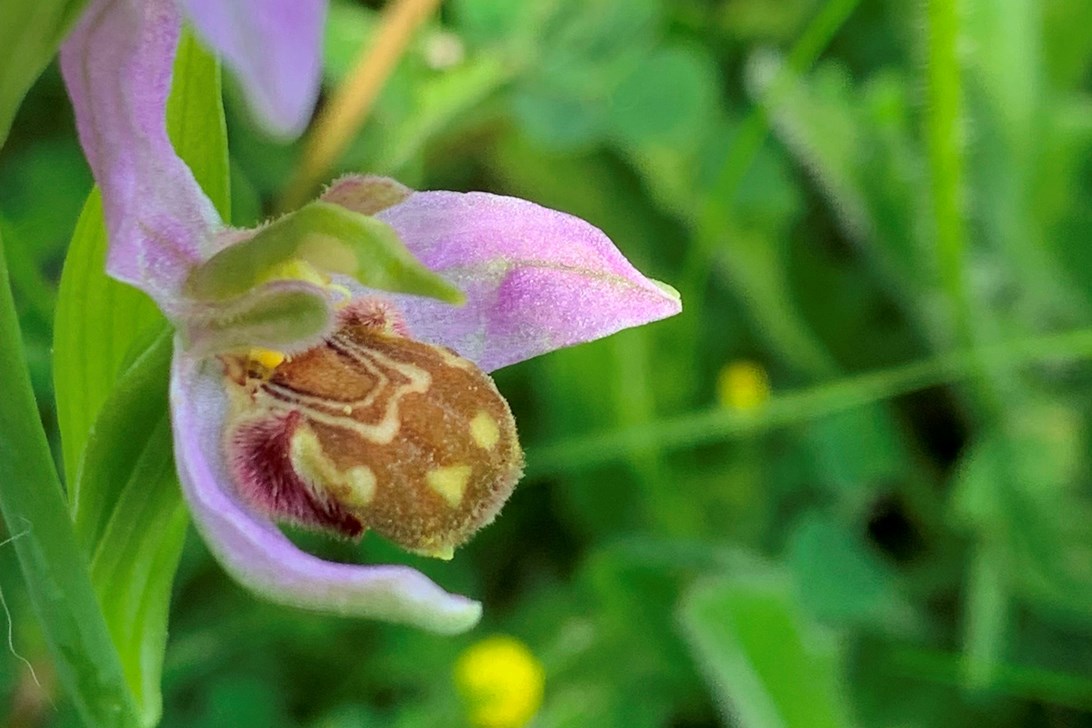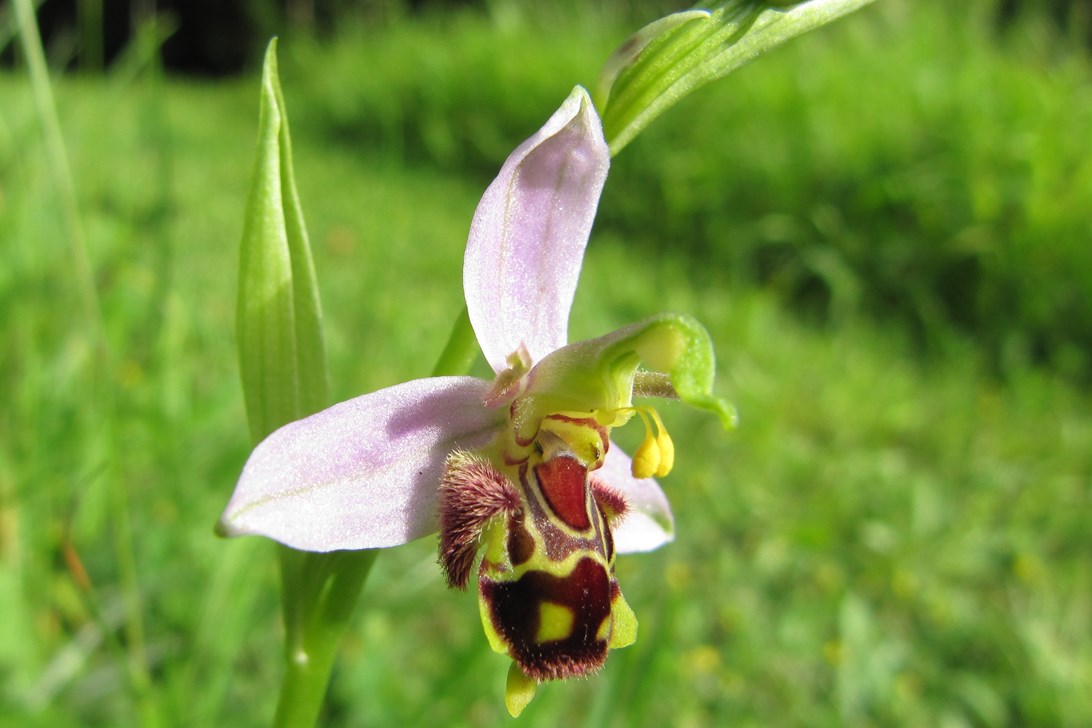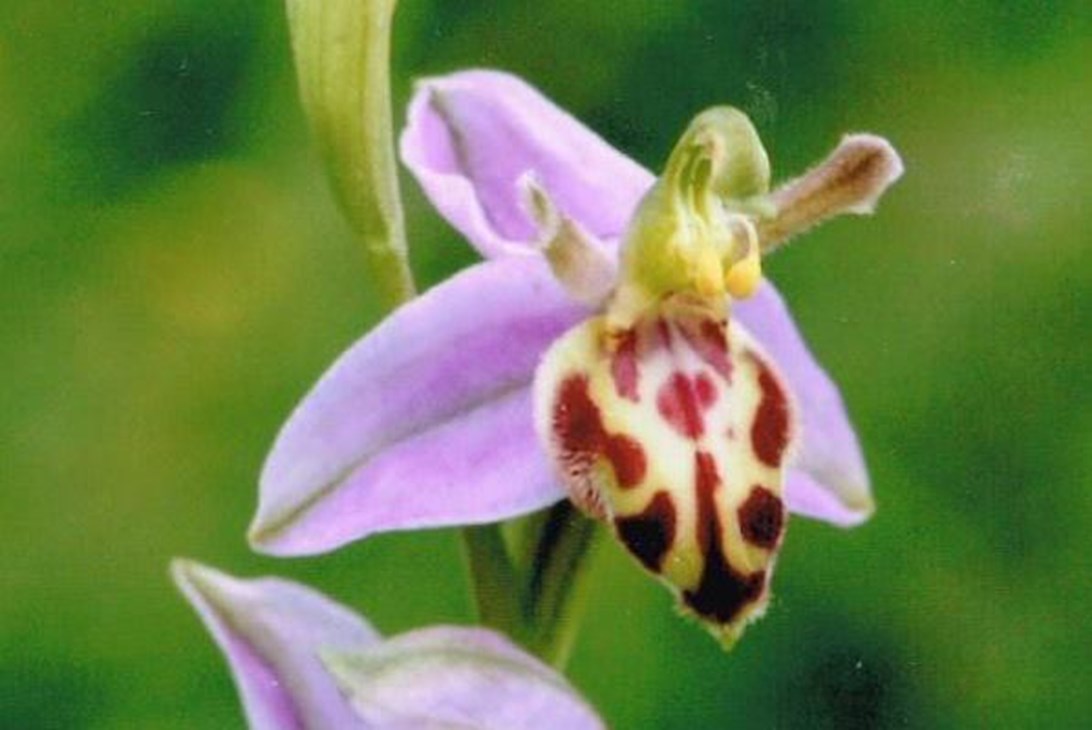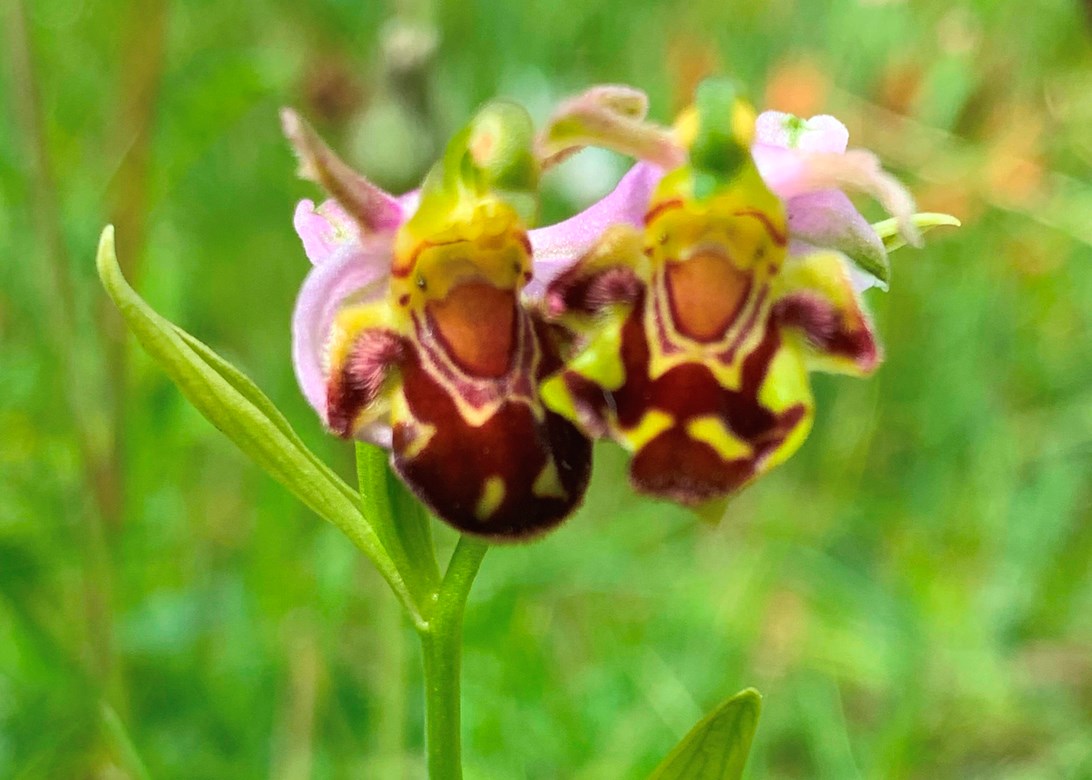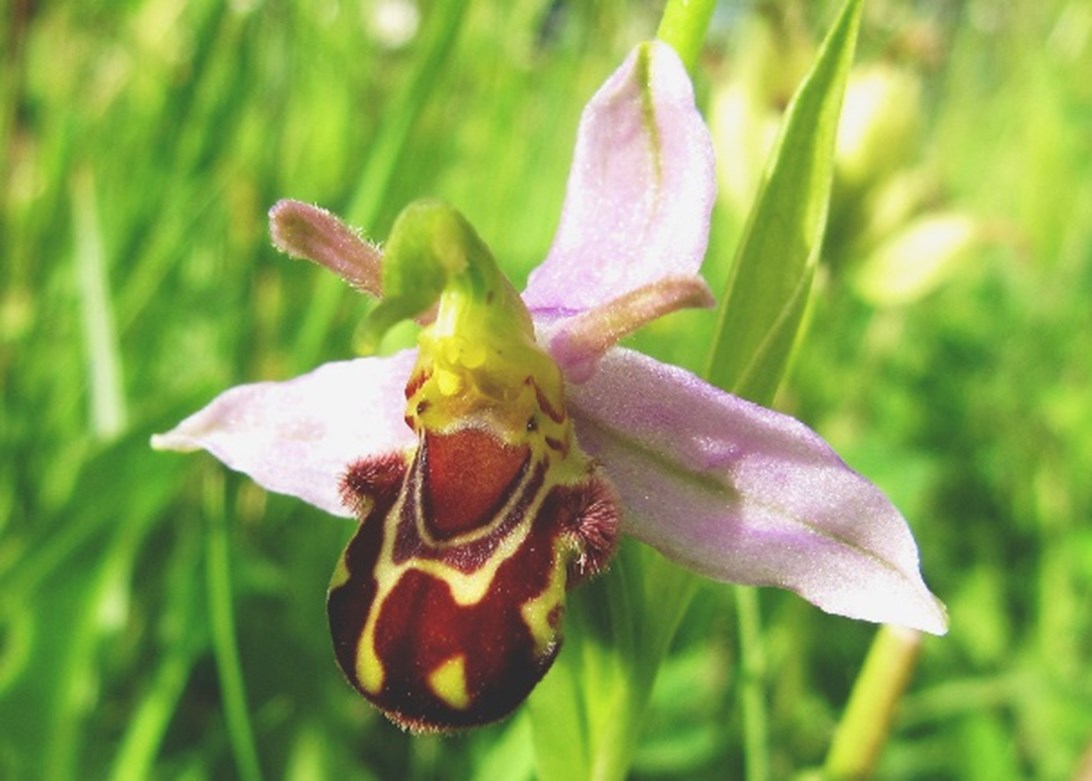Our Orchids
There are approximately fifty-one recognised species of wild orchid in Britain and Ireland. Nearly all are under threat as their habitats are being lost due to modern farming practices and land clearance for housing etc. Many rely on specific strains of mycorrhizal fungi in the soil for nutrients and germination so if conditions change or woodlands destroyed the orchids cannot survive. It is extremely rare therefore for an orchid to survive being dug up and replanted elsewhere, however carefully carried out.
For anyone fascinated with our native wild orchids, I would recommend Jon Dunn's book, Orchid Summer in which he relives his quest to find and photograph them all, including the ghost orchid, during one long summer.
June 2021, everything flowering nearly a month later this year. More white helleborines than ever spreading out into the meadow. Five bee orchids so far with one a new variant.
June 2022: more than forty bee orchids have been found having appeared much earlier in June than usual.
Our meadow has had wild orchids for as long as anyone can remember. Two species appeared once the farmer stopped spraying the field behing the far hedge, others flower every year although not always in the same places. Each summer now we find the four types described below.
Whte Helleborine
The earliest orchid to flower is the white helleborine (Cephalanthera damasonium). Each one is a single tall stem with white flowers and broad lanceolate leaves coming off the stem at alternate intervals in two opposite rows. Inside each flower is a yellow lip or epichile that gives rise to its folk name of 'poached egg plant'.
The flowers don't open fully as they are self-pollinating. As a result they can grow in deep shade where pollinators are almost absent, typically in beech woods on chalky soil.
The plants take at least eight years to develop from seed, and flowering can take an additional two to three years after that. The white helleborine is only common in South-East England although it is now in serious decline due to loss of habitat caused by the clearance of woodlands.
We found the first one only a few years ago but since then their numbers have increased with over fifty this year. They flower from early May until the end of June.
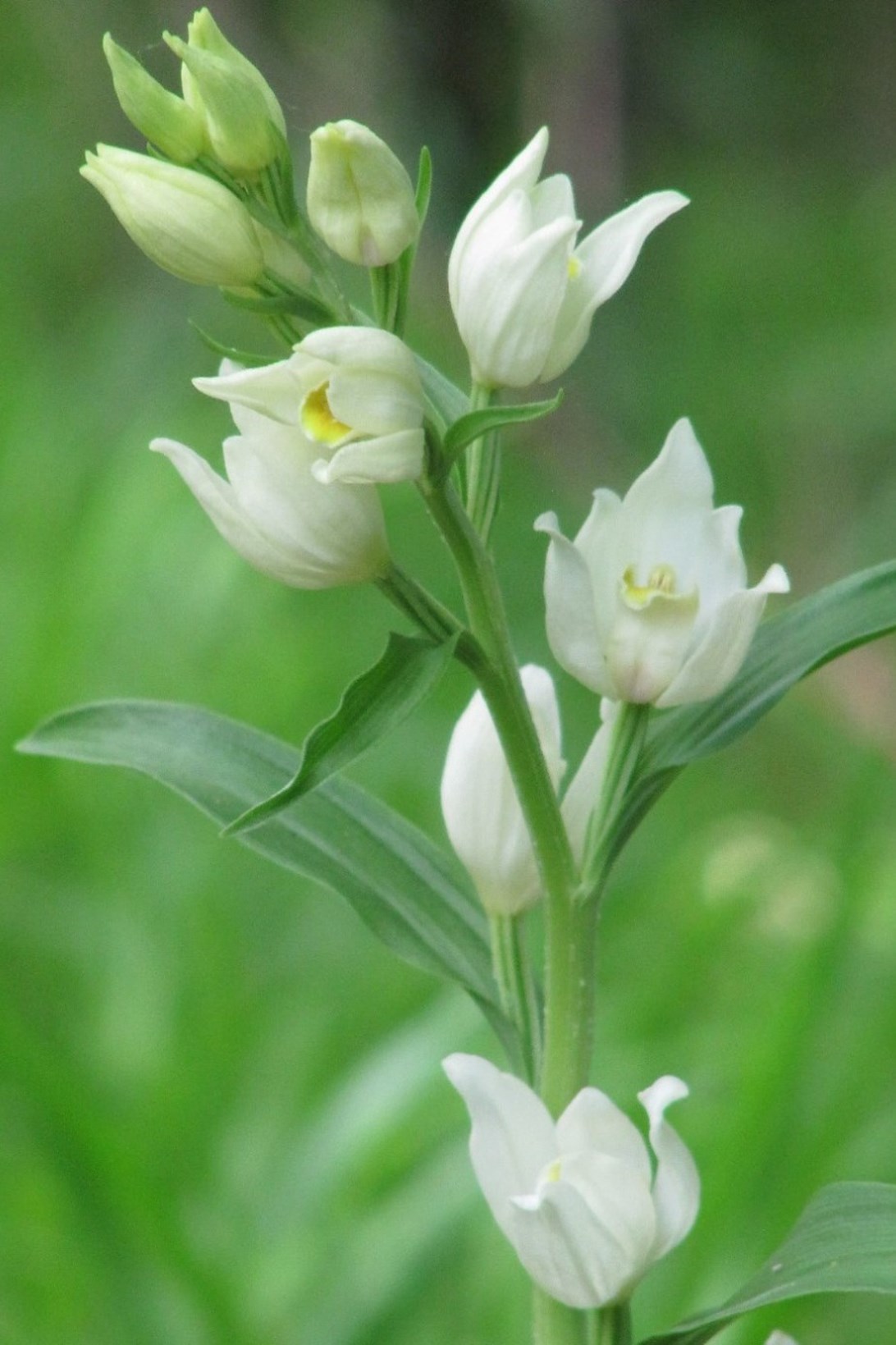
Spotted Orchid
Flowering from June to August the spotted orchid (Dactylorhiza fuchsii) is the most common, growing in many different habitats. It is easily identified from the purple spots on its leaves that form a rosette from which the flower spike appears. The flowers vary from very pale pink to purple with patterns of dark purple stripes, dots and dashes.
They used to form a carpet under the copper beech. However the tree now casts too much shade, limiting them to the more open areas of the meadow.
The spotted orchid is also known as Adam and Eve, Adder's Flower, Crow-foot, Curlie-Daddie, Dead man's finger, Kettle-case, Old Woman's Pincushion and Ring-finger.
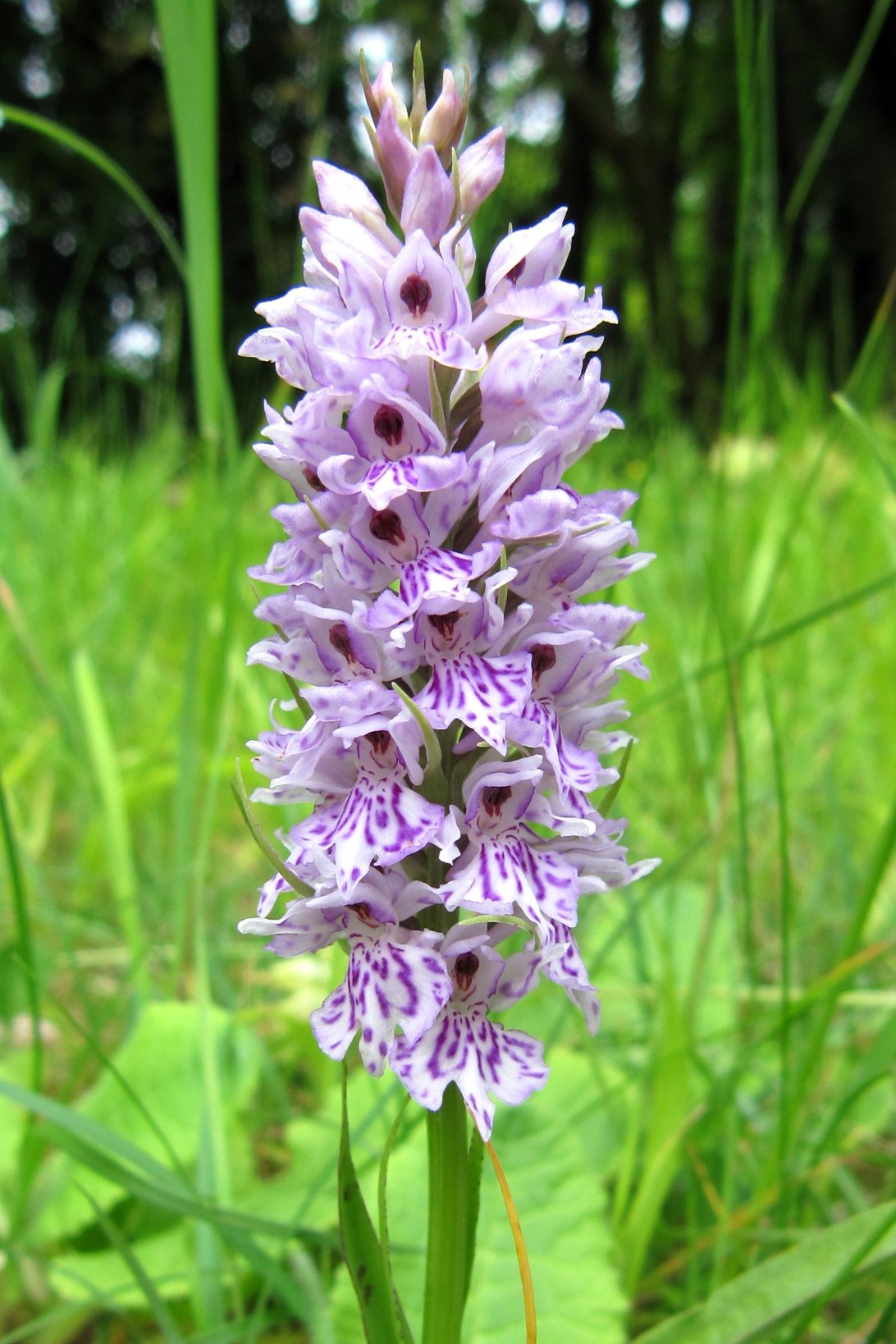
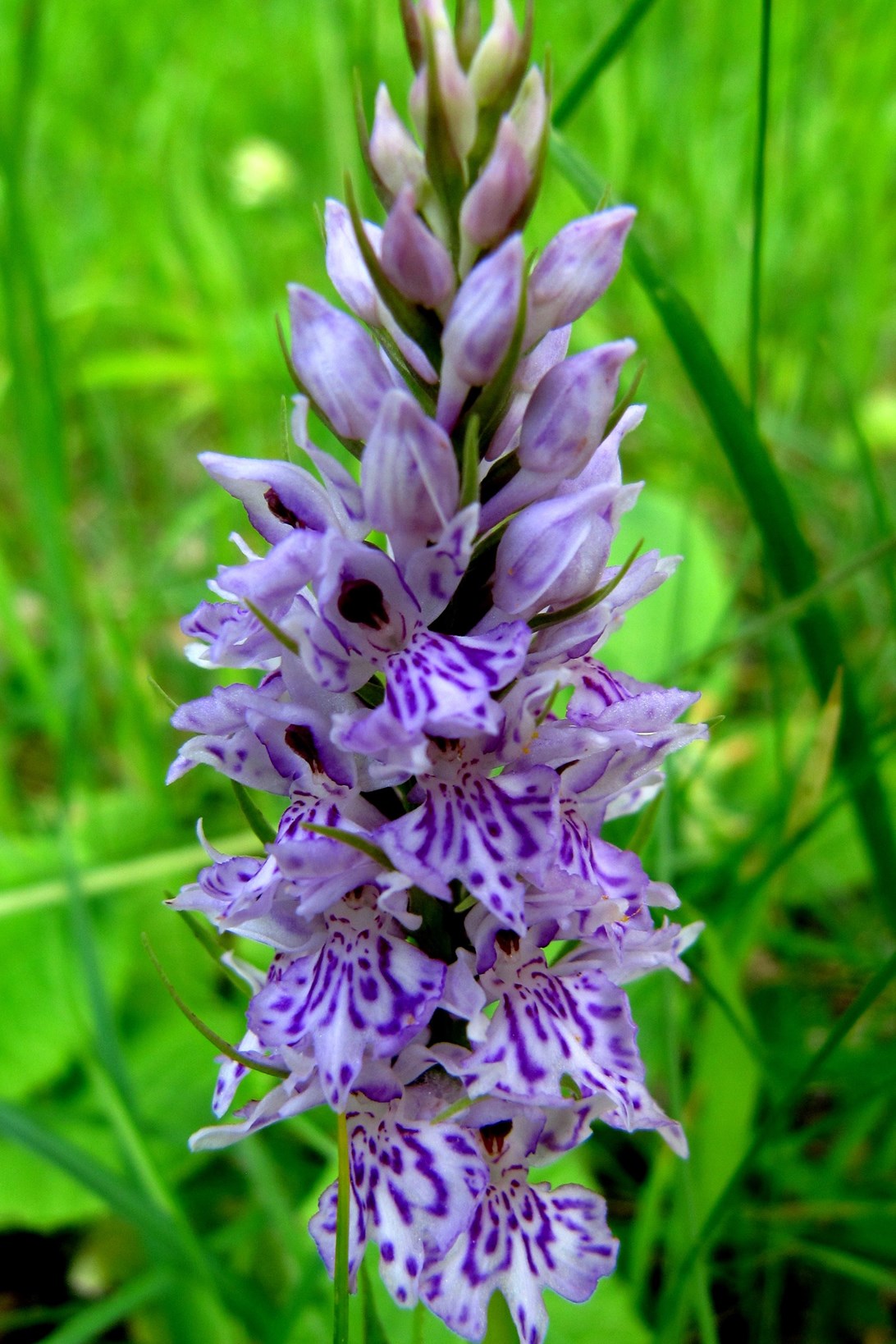
Pyramidal Orchid
Very soon after the spotted orchids, the pyramidals (Anacamptis pyramidalis) appear. They prefer chalky conditions and, like many orchids, require a specific fungus to be present in the soil in order to bloom. As a result they appear in roughly the same areas of the meadow each year. The flowers range from deep purple to almost white in a dense, pyramid-shaped cluster at the top of the stem. The leaves are long, narrow and pointed.
I would never dig up a wild orchid, but apparently the tuber can be dried and ground to give a fine white powder, called salep. It is very nutritious when added to drinks, cereals and making bread. It is also used medicinally in diets for children and convalescents.
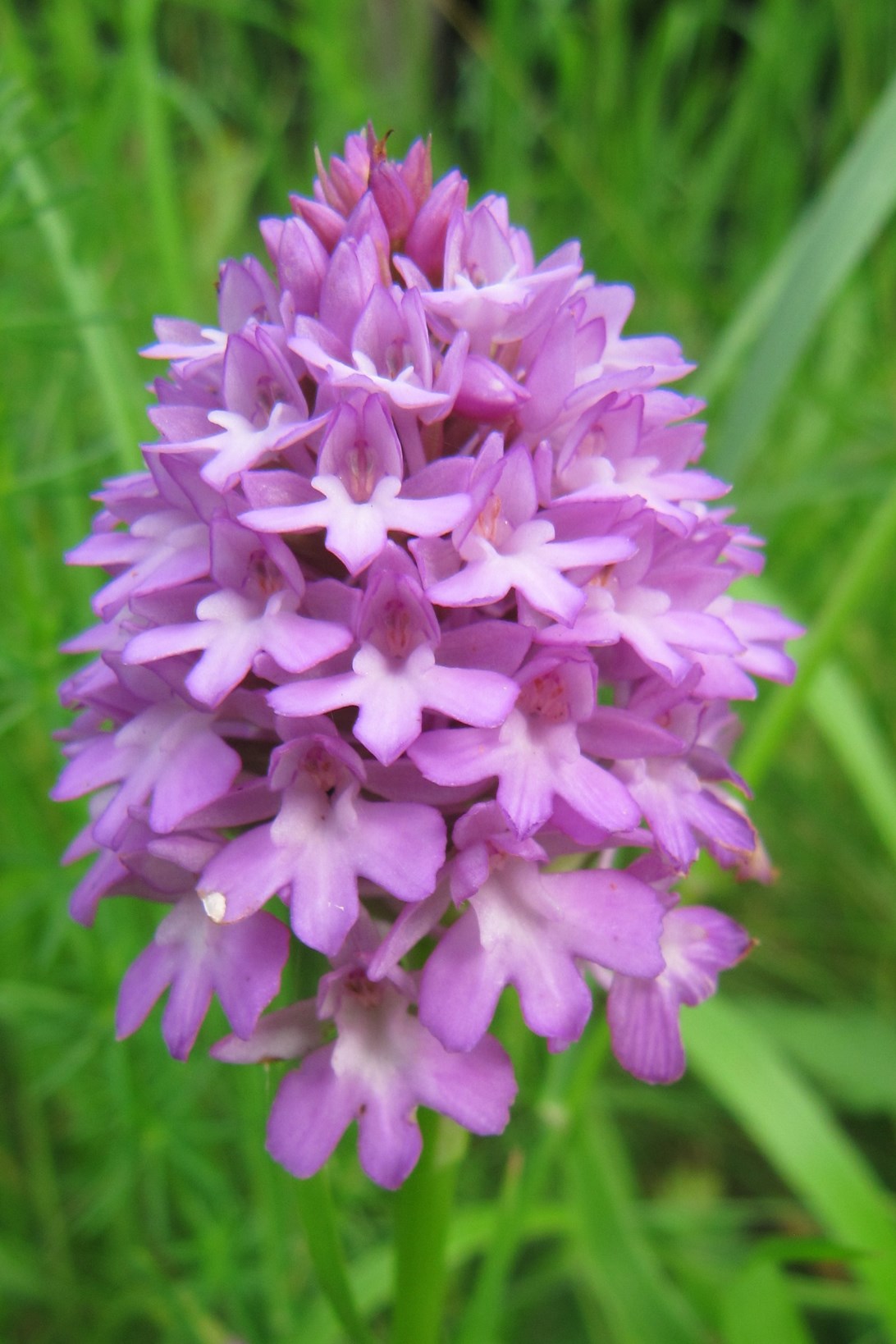
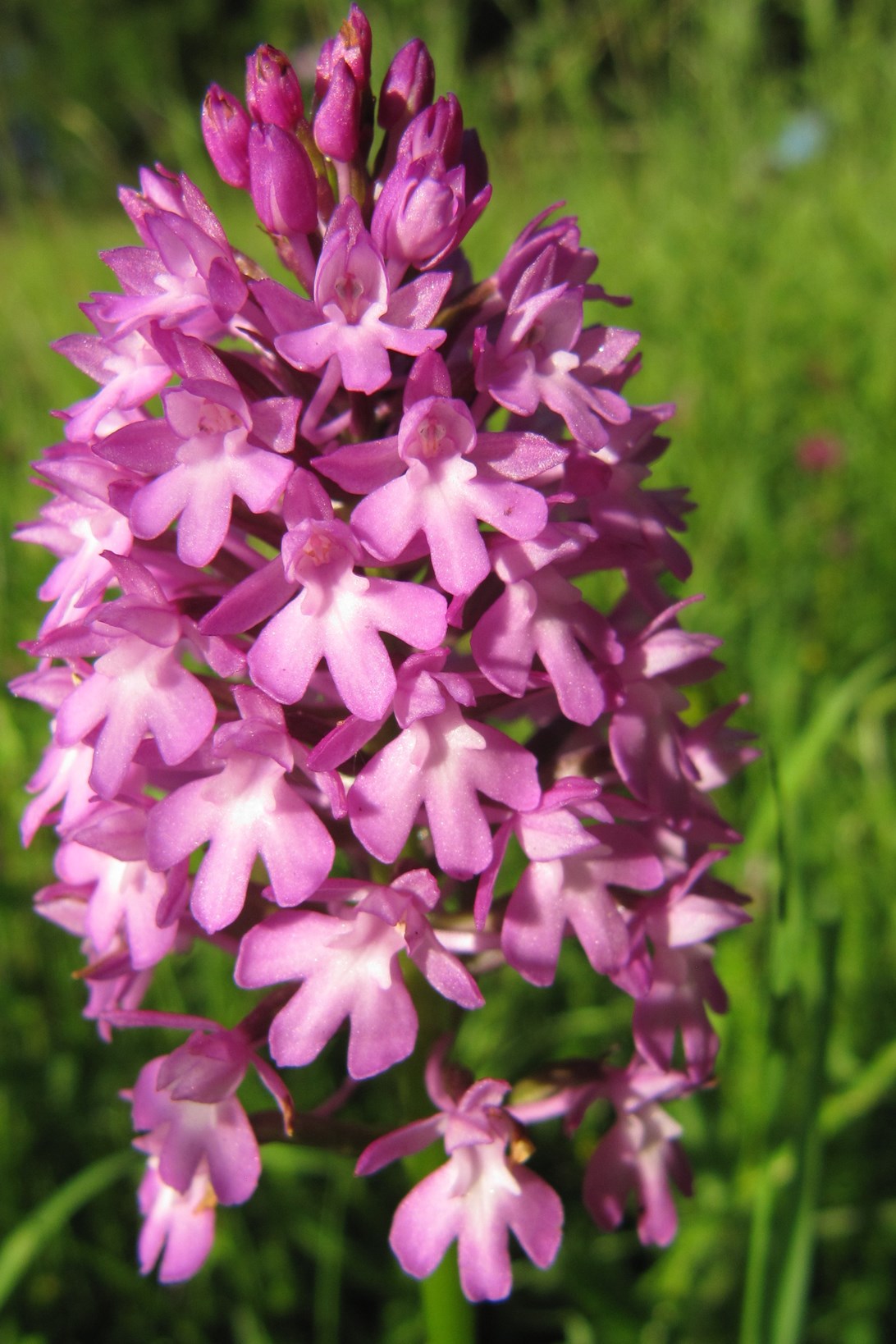
Bee Orchid and its variants
Bee orchids (Ophrys apifera) have always been found in this area of the Chiltern Hills, however they did not appear in our meadow until about twenty years ago when the farmer stopped spraying the field behind the far hedge.
Our bee orchids are unreliable, from fifteen in one year to just a few in another. We found six this year, each one with two to three flowers on the spike.
The orchid gets its name from its main pollinator which is attracted to the flower in an attempt to mate. However the particular species of bee required is not found in the UK so in this country the orchids have evolved to self-pollinate.
Each flower has three large pink sepals, within which are the petals shaped and coloured like a visiting bee. The sepals resemble wings and the furry brown lips have bee-like yellow markings. A female bee scent is also given off, adding to the deception..
Self-pollination may account for the high incidence of variants with different patterns and markings seen even on the flowers of the same plant.
The top photo is of a typical orchid with the rounded bumble bee shape and yellow markings. It shows the two yellow pollinia which fall forward and down to rest on the stigma thus releasing pollen and facilitating self-pollination. Others found can have a much longer, pointed, furrier lip with fewer markings.
The second is the variant Ophrys apifera var.belgarum. We found one plant a few years ago but it has not returned. The lip is lighter in colour, slightly pointed with different markings. The furry side-lobes are smaller..
As with other orchids, the bee relies upon a symbiotic relationship with mycorrhizal fungi to extract sufficient nutrients from the soil. This makes it vulnerable to chemicals, in particularly fungicides. Now that the field behind us is kept for sheep, we hope our bee orchids will continue to flower and produce even more variants.
June 2020 and three bee orchids have been found so far, one having unusually two flowers on the same stalk.
June 2021 just two bee orchids so far but one is a new variant, being a much paler brown.
June 2022 and over forty were found scattered across the meadow.
